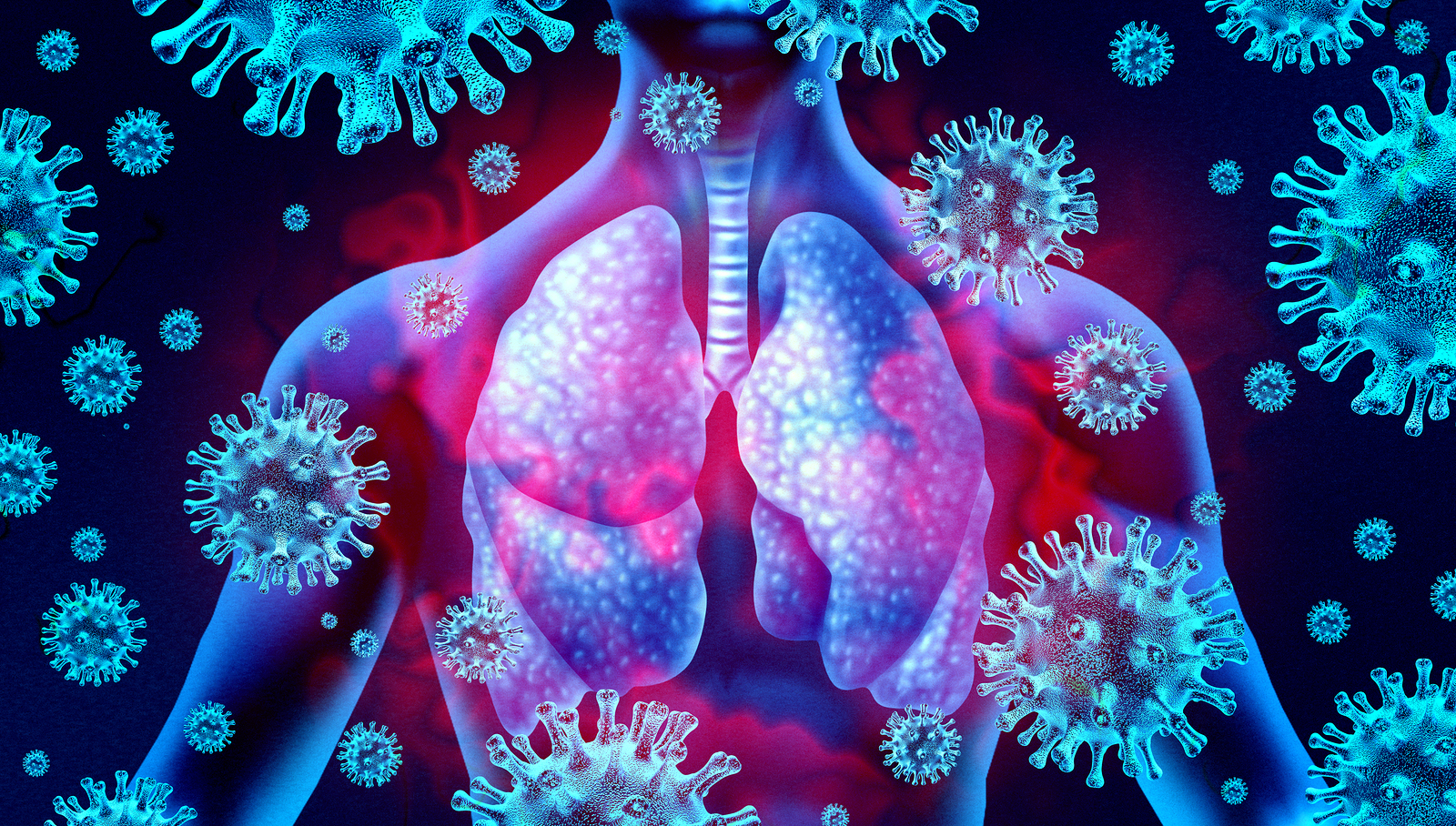Homeopathic Remedies for Pneumonia and its Related Symptoms

Does homeopathy treat pneumonia? Not by name or diagnosis but it does have several remedies that treat complex symptom patterns that may be associated with pneumonia … or not. The following list of remedies contains some examples.
Also included in this article is a repertory chart that shows the relationship between symptoms and remedies. Both it and the remedy list will be updated over the coming days.
Links to papers and research are toward the end.
(Note: If you or a family member has difficulty breathing, or if you suspect you may have pneumonia, it is important to see a qualified healthcare provider for an accurate diagnosis and treatment advice.)
Aconitum napellus (Acon.)
KEY SYMPTOMS
Rapid onset of intense symptoms. Restless, anxious or panicked. Hot, dry skin with intense thirst for cold drinks. First-stage pneumonia.
COMMON SYMPTOMS
Intense symptoms, high fever; fever preceded by chill; onset after exposure to cold air, wind or shocks; anxious or panicked; fear or belief that death is imminent; restlessness and tossing; tense, full pulse; hot, dry skin; flushed face; painful cough that is better for sitting; bright-red, blood-stained sputum (expectoration); intense thirst for cold drinks; Often left-sided pneumonia; (not useful for later stages of pneumonia with thick or coloured expectoration.)
Antimonium Tartaricum (Ant-t.)
KEY SYMPTOMS
Pneumonia with rattling wet mucus in chest. Weak, ineffectual cough which doesn’t raise the mucus.
COMMON SYMPTOMS
- Last stages of pneumonia, especially in infants or the elderly.
- Rattling in chest.
- Ineffectual, wet-sounding cough – unable to raise the mucus.
- Short and difficult breathing.
- Accessory muscles of neck and ribs used during inspiration – “sucked in” appearance.
- Must sit up to breathe – suffocative sensation.
- Blueness of lips from lack of oxygen.
- Want to be fanned.
- Weakness.
- Jaundice with pneumonia.
Arsenicum Album (Ars.)
KEY SYMPTOMS
Pneumonia with exhaustion and collapse, initially interspersed with episodes of restlessness. Chilliness and with desire for warmth. Scanty, frothy sputum.
COMMON SYMPTOMS
- Restless and anxious in early stage.
- Exhaustion and collapse, perhaps interspersed with episodes of restlessness, in latter stages.
- Tightness of chest.
- Chest burns with each cough.
- Scanty, frothy sputum.
- Suffocating feeling on lying down.
- Mainly right-sided pneumonia, especially upper lobe.
- Chilly with desire for warmth.
- Rigors (intense shaking) during the chill.
- Rigors when exposed to cold air or drafts.
- Symptoms worsen around midnight and early hours.
- Thirst for sips of cold water.
Bryonia Alba (Bry.)
KEY SYMPTOMS
Pneumonia with chest pain worsened by cough or motion. Dry mouth.
COMMON SYMPTOMS
- Pneumonia with a slow onset.
- Avoids motion – sits or lies still, often on the affected side.
- Fever accompanied by chills.
- Dusky colour to face.
- Difficult breathing.
- Stitching chest pain from cough, deep breathing or movement.
- Cough triggered by movement
- Person holds chest when coughing to stop movement and pain.
- Rust or brick coloured, sticky expectoration.
- Headache with stitching or bursting pains, worsened by cough.
- Dry tongue with thirst for large amounts of cold water at infrequent intervals.
- Tongue coated – white to dirty – especially in centre.
- Irritable if disturbed.
- Often right-sided pneumonia.
Carbo Vegetabilis (Carb-v.)
KEY SYMPTOMS
Pneumonia with weakness and collapse. Skin cold to touch but not wanting to be covered or warmed.
COMMON SYMPTOMS
- End stage of pneumonia with collapse.
- Apathetic or even comatose.
- Rapid, shallow breathing.
- Want open air or to be fanned.
- Profuse but difficult expectoration.
- Cold breath.
- Cold perspiration.
- Cold to touch but don’t want to be covered or warmed.
- Hands and feet cold and blue.
- Abdomen distended with gas.
Gelsemium Sempervirens (Gels.)
KEY SYMPTOMS
Pneumonia with weakness, heaviness, and trembling of muscles on exertion.
COMMON SYMPTOMS
- Gradual onset of symptoms.
- Dullness, sluggishness and heaviness.
- Drooping of head and eyelids.
- Weakness or trembling of muscles on exertion.
- Aching muscles.
- Headache at the back of the head.
- Shivering up and down the spine.
Phosphorus (Phos)
KEY SYMPTOMS
Pneumonia with heaviness and oppression of chest. Fearfulness eased by company.
COMMON SYMPTOMS
- High fever.
- Anxious breathlessness. Feels better sitting upright with head tilted backward.
- Quickened or laboured breathing.
- Heaviness and oppression of the chest.
- Hard, hacking cough.
- Chest burns with cough.
- Hoarse voice.
- Thin, batter-like expectorant.
- Expectorant may be rust coloured of streaked with blood.
- White-coated tongue.
- Thirst for cold drinks.
- Swallows in sips because of breathlessness.
- Pneumonia often left-sided.
- Symptoms worsen when lying on the left side.
- Anxious and fearful when alone – strong need for company.
Pulsatilla Pratensis (Puls.)
KEY SYMPTOMS
Breathlessness. Difficulty in breathing. Feels worse in warm, stuffy rooms and wants open air. Thirstless or low thirst.
COMMON SYMPTOMS
- Cough dry in the evening but loose in the morning.
- Dry hacking cough from tickling or itching in the throat or chest.
- Sensation of heaviness on chest.
- Loss of smell and taste with catarrh.
- Everything tastes bitter.
- Changeable and contradictory symptoms.
- Often chilly but prefers open air.
- Emotional and tearful with a desire for consolation and sympathy.
Repertory Chart
The following image is of a typical repertory chart a homeopath may produce when assessing the relationship between symptoms and potential remedies. This chart is just one example as many other symptoms could have been used as a reference.
Further Information
Homeopathy Use in the USA and Implications for Public Health: a review
Extract: “While URTIs and otitis media are the most frequently studied infectious conditions in the modern homeopathic research literature, reports from the nineteenth and early twentieth centuries suggest that homeopathy may have a role in treating and preventing more serious infections as well.26 Dr. Andre Saine has culled this literature for case reports of mortality rates in pneumonia and has found that the mortality rate under homeopathic treatment was 3.4% compared to 24.4% with conventional treatment in the pre-antibiotic era and 13.7% in the modern era for community-acquired pneumonia.27”
Abstract: Homeopathy offers the safest and best outcomes ever demonstrated by any system of medicine for patients with pneumonia and therefore would receive the highest possible recommendation of any intervention for these patients (1A/strong recommendation with high-quality evidence).
Related Information
Have Two Homeopathic Doctors Identified a Treatment and Preventative Remedy for COVID-19?
Homeoprophylaxis: Human Records, Studies and Trials
India Uses Homeopathy for Epidemics
Cuba Uses Homeopathy for COVID-19
COVID-19: Is It Like Mountain Sickness?
COVID Chronicles: Which Remedy?
Homeopathic Remedies for Pneumonia-Related Symptoms
Q. Will the Coronavirus Nosode Help with COVID-19?






